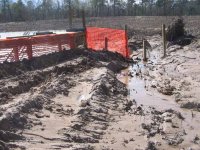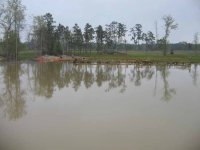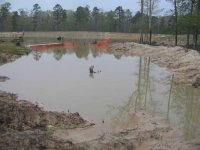Topic 1: Achieving a pond balance consistent with your objectives.
Nature moves in the direction toward equilibrium in ponds or what most call balance. The level of equilibrium or balance achieved is driven by a very complex set of variables not the least of which include your initial and recurring stocking rates and your pond management strategy. Let us just say, for discussion purposes, that all other variables are equal (which they never are in ponds) and we are just dealing with stocking rates and pond management strategy.
If you have a very high stocking rate of LMB, all other things being equal, then your LMB will tend toward small and possibly stunted fish. If you have insufficient forage, the resulting balance will be similar.
Most folks agree that in recreational, non-aquaculture ponds like we have, we can reasonably support 100 pounds per acre of predators, more or less. Every pond is different, however.
If your pond management strategy allows the LMB numbers and total weight to go significantly higher than the 100 pounds per acre, then the result may again be small, stunted fish. The pond will reach a balance but the resulting size of the fish may not be consistent with your objectives.
Ok, I said all that to caution you on adding mature LMB to your ponds. Be careful to keep track of how many and what weight you add. Otherwise, you may very well find your balance shifting toward that small fish, stunted fish extreme. It can happen very quickly. If you have added 12 mature LMB so far, then you have probably added something like 30 pounds. What was your initial stocking rate and do you remove any LMB? If you stocked 100 LMB per acre a year ago and did not remove any, then you would be at or above the 100 pounds per acre WITHOUT counting the additional 30 pounds of added LMB.
By the way, in my view, those channel catfish should count towards that 100 pounds per acre of predators as would any other predator type fish you may have added. If you artificially feed the cats, then maybe you could argue they do not all count towards the 100 pounds, but they do eat small fish and compete with the LMB for certain foods. .
It is really a tricky deal, adding mature LMB to an existing LMB population. It is very difficult to know what you have in the pond at any given time and to develop appropriate management strategies. It requires very careful monitoring and a willingness to implement strategies which manage the balance toward your objectives. For example, you may need to impose a slot limit and remove all LMB below 15, 14, 13, etc. inches in order to help manage the balance towards your objectives.
I am not saying that mature LMB should not be added, just saying that doing so makes the management problems more acute and perhaps requiring more attention. The next topic is closely related.


